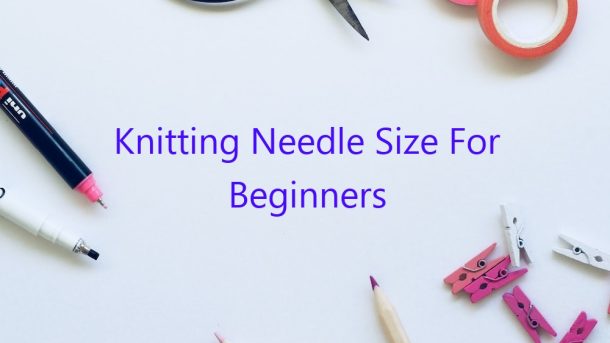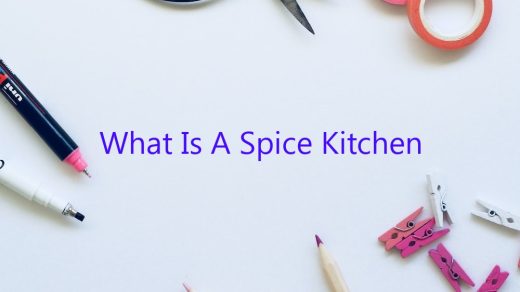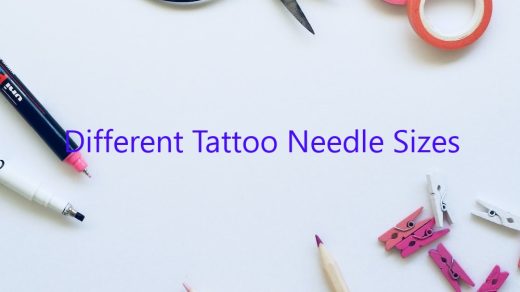When it comes to knitting, needle size is important. You need to use the correct size needle in order to create the correct stitch size. This is especially important for beginners, who may not know how to adjust their knitting if they are using the wrong size needle.
The most common knitting needle size is US size 8, also known as UK size 6. This size is a good starting point for beginners, as it is versatile and can be used for a variety of knitting projects.
If you are new to knitting, it is a good idea to start with a size 8 needle and some light-weight yarn. This will allow you to practice the basic stitches and get comfortable with the process. As you become more experienced, you can then move on to heavier yarn and smaller needles.
There are a variety of different needle sizes available, so it is important to choose the right size for your project. You can find a size chart online or in a knitting book, which will help you to select the right size needle for the type of yarn you are using.
It is also important to remember that not all needles are created equal. Some needles are made of metal, while others are made of plastic. Metal needles are generally sharper and more durable than plastic needles. Plastic needles are generally more flexible and easier to work with.
So, which is better – metal or plastic needles?
That’s a tough question to answer, as it depends on your individual preferences. Metal needles are generally considered to be better quality, but some knitters find them too sharp and difficult to work with. Plastic needles are generally more flexible and easier to use, but they may not be as durable as metal needles.
Ultimately, it is up to you to decide which type of needle works best for you. Try out a few different types and see which one you prefer.
Now that you know about knitting needle size, it’s time to get started on your first project!
Contents
How do I know what size knitting needle to use?
Knowing the right knitting needle size to use is essential for a successful knitting project. The size of the needle you use will determine the finished size of your project.
There are a few ways to determine the size of knitting needle you need. The most common way is to measure the thickness of the yarn you are using. Yarn thickness is usually measured in units called “ply.” A single ply yarn is the thinnest, while a multiple ply yarn is the thickest.
To find the right needle size, check the yarn label to see what the ply is. Then find the corresponding needle size on the knitting needle size chart. The chart will list a variety of needle sizes and the corresponding thickness of yarn that each size can handle.
Another way to determine the needle size is to knit a swatch. Cast on a number of stitches that is a multiple of 4. Knit in stockinette stitch for 4 inches. Bind off. Measure the number of stitches and rows. Then find the needle size on the knitting needle size chart that has the same number of stitches and rows.
The knitting needle size chart also has a variety of standard knitting needle sizes and their corresponding metric sizes. If you are using a metric size needle, simply find the US size that is closest to the metric size and use that.
No matter which method you use to determine the needle size, always knit a swatch to make sure the size is correct. The swatch will also help you determine the correct gauge for your project.
What is the most commonly used knitting needle size?
What is the most commonly used knitting needle size?
There is no one definitive answer to this question as the most commonly used knitting needle size will vary depending on the knitter’s individual preferences and the type of knitting project being worked on. However, a general rule of thumb is that the most commonly used knitting needle size is between a size 3 and size 8 US (3.25 to 5 mm).
knitting needles come in a variety of different sizes, and the size you need will depend on the type of knitting project you are working on. In general, smaller knitting needles are used for finer yarns and smaller projects, while larger knitting needles are used for thicker yarns and larger projects.
However, there is no one definitive answer to the question of what is the most commonly used knitting needle size, as this will vary from knitter to knitter and from project to project. Some knitters prefer smaller needles for finer yarns and smaller projects, while others prefer larger needles for thicker yarns and larger projects. So, the best way to find out what the most commonly used knitting needle size is for you is to experiment with different sizes and find what works best for you.
Is it easier to knit with big or small needles?
There is no definitive answer to the question of whether it is easier to knit with big or small needles, as it depends on the individual knitter’s preferences and abilities. However, there are a few things to consider when deciding which type of needle to use.
Big needles tend to be best for knitting bulky yarns, as they create stitches that are larger and therefore easier to see. Small needles, on the other hand, are better for knitting finer yarns, as they create smaller stitches that are less likely to unravel.
Some knitters find that using bigger needles makes it easier to keep track of the stitches, as they can see them more clearly. Others find that using smaller needles makes it easier to control the knitting process, and results in neater stitches.
Ultimately, the best way to determine whether big or small needles are easier to use is to try both out and see which you prefer.
Does the size of the knitting needle matter?
So, you want to start knitting, but you’re not sure what size knitting needle to use. Does the size of the knitting needle matter?
In short, yes, the size of the knitting needle matters. The size of the knitting needle you use will determine the size of the stitches you knit. The size of the knitting needle you use will also determine the thickness of the yarn you use.
If you are a beginner, it is best to start with a size 8 knitting needle and worsted weight yarn. This will give you medium-sized stitches and a moderate thickness yarn.
If you are looking for a tighter knit, you can use a size 6 knitting needle with a DK weight yarn. If you are looking for a looser knit, you can use a size 10 knitting needle with a sport weight yarn.
As you get more experienced, you may want to experiment with different needle and yarn sizes to create different textures and effects. But, for the most part, the size of the knitting needle you use will determine the size of the stitches and the thickness of the yarn.
What should a beginner knit first?
There are so many different things that a beginner could knit first, it can be hard to know where to start. In this article, we will discuss a few different items that might be a good choice for a beginner to knit.
One of the best things for a beginner to knit is a scarf. Scarves are relatively easy to make, and they are a great way to practice your knitting skills. Another option for a beginner is a hat. Hats can be a bit more challenging than scarves, but they are still a relatively easy project.
If you are looking for a more challenging project, you might want to try knitting a sweater. Sweaters can be a bit more difficult to make, but they are definitely worth the effort. If you are a beginner, it might be a good idea to start with a smaller sweater, such as a child’s sweater.
Another option for a beginner is to knit a toy. Toys are a great way to practice your knitting skills, and they are also a lot of fun to make. There are a lot of different toy patterns available online, so you should be able to find one that is perfect for you.
If you are looking for a project that is a bit more challenging than the ones listed above, you might want to try knitting a blanket. Blankets can be a lot of work, but they are definitely worth the effort.
As a beginner, it is important to choose a project that is challenging, but not too challenging. If you choose a project that is too difficult, you might become frustrated and give up on knitting altogether. Choose a project that you are excited to start, and then get started!
What happens if you knit with bigger needles?
What happens if you knit with bigger needles?
The answer to this question is a bit complex, as it largely depends on the project you are working on and the yarn you are using. In general, knitting with bigger needles will result in a fabric that is less dense and more airy. This is because a bigger needle can hold more stitches, so there is more space between each one. This can be a desirable trait for some projects, such as a light summer scarf. However, it is important to note that using bigger needles may also lead to a less sturdy fabric, so it is important to be aware of this when selecting your project.
What is the easiest thing to knit for beginners?
There are a few things that are considered the easiest things to knit for beginners. Mittens, hats, and scarves are all easy projects that can be completed relatively quickly.
Mittens are a great project for beginners because they are relatively small and easy to knit. They also don’t require any shaping, which can be confusing for beginners. To knit a pair of mittens, you will need to cast on stitches for the cuff, knit in the round until the mitten is the desired length, and then sew the seam closed.
Hats are another great project for beginners. They can be knit in a variety of styles, and most hats only require a few basic stitches. To knit a hat, you will need to cast on stitches for the brim, knit in the round until the hat is the desired length, and then sew the seam closed.
Scarves are also a great project for beginners. They can be knit in a variety of styles, and most scarves only require a few basic stitches. To knit a scarf, you will need to cast on stitches, knit until the scarf is the desired length, and then sew the seam closed.




